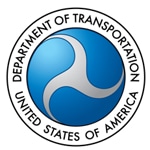| State | Structurally Deficient / Functionally Obsolete Bridges* | Annual Total Extra Vehicle Repairs / Operating Costs Due to Driving on Roads in Need of Fixing** | Percentage of Roads in Poor / Mediocre Condition** |
| ALABAMA | 3,608 of the 16,078 (22.4%) | $530 million ($141 per motorist) | 25% |
| ALASKA | 290 of the 1,196 (24.2%) | $181 million ($359 per motorist) | 49% |
| ARIZONA | 954 of the 7,862 (12.1%) | $887 million ($205 per motorist) | 52% |
| ARKANSAS | 2,894 of the 12,748 (22.7%) | $634 million ($308 per motorist) | 39% |
| CALIFORNIA | 6,953 of the 24,955 (27.9%) | $13.892 billion ($586 per motorist) | 68% |
| COLORADO | 1,438 of the 8,612 (16.7%) | $1.034 billion ($287 per motorist) | 70% |
| CONNECTICUT | 1,472 of the 4,218 (34.9%) | $847 million ($294 per motorist) | 73% |
| DELAWARE | 177 of the 864 (20.5%) | $168 million ($257 per motorist. | 36% |
| FLORIDA | 2,044 of the 12,070 (16.9%) | $1.792 billion ($128 per motorist) | 26% |
| GEORGIA | 2,600 of the 14,769 (17.6%) | $374 million ($60 per motorist) | 19% |
| HAWAII | 494 of the 1,125 (43.9%) | $456 million ($515 per motorist) | 49% |
| IDAHO | 859 of the 4,232 (20.3%) | $316 million ($305 per motorist) | 45% |
| ILLINOIS | 4,246 of the 26,621 (15.9%) | $2.4 billion ($292 per motorist) | 73% |
| INDIANA | 4,168 of the 18,953 (22%) | $1.249 billion ($225 per motorist) | 17% |
| IOWA | 6,271 of the 24,398 (25.7%) | $756 million ($381 per motorist) | 46% |
| KANSAS | 4,465 of the 25,171 (17.7%) | $646 million ($319 per motorist) | 62% |
| KENTUCKY | 4,436 of the 14,116 (31.4%) | $543 million ($185 per motorist) | 34% |
| LOUISIANA | 3,790 of the 13,050 (29%) | $1.2 billion ($408 per motorist) | 62% |
| MAINE | 791 of the 2,402 (32.9%) | $246 million ($245 per motorist) | 53% |
| MARYLAND | 1,418 of the 5,291 (26.8%) | $1.598 billion ($422 per motorist) | 55% |
| MASSACHUSETTS | 2,694 of the 5,136 (52.5%) | $1.461 billion ($313 per motorist) | 42% |
| MICHIGAN | 3,018 of the 11,022 (27.4%) | $2.534 billion ($357 per motorist) | 38% |
| MINNESOTA | 1,513 of the 13,137 (11.5%) | $797 million ($250 per motorist) | 52% |
| MISSISSIPPI | 3,636 of the 17,044 (21.3%) | $811 million ($419 per motorist) | 51% |
| MISSOURI | 6,633 of the 24,350 (27.2%) | $1.6 billion ($380 per motorist) | 31% |
| MONTANA | 882 of the 5,126 (17.2%) | $136 million ($184 per motorist) | 52% |
| NEBRASKA | 3,765 of the 15,370 (24.5%) | $380 million ($282 per motorist) | 59% |
| NEVADA | 253 of the 1,853 (13.7%) | $391 million ($233 per motorist) | 20% |
| NEW HAMPSHIRE | 790 of the 2,438 (32.4%) | $267 million ($259 per motorist) | 54% |
| NEW JERSEY | 2,334 of the 6,566 (35.5%) | $3.476 billion ($601 per motorist) | 66% |
| NEW MEXICO | 654 of the 3,935 (16.6%) | $397 million ($291 per motorist) | 44% |
| NEW YORK | 6,775 of the 17,442 (38.8%) | $4.551 billion ($403 per motorist) | 60% |
| NORTH CAROLINA | 5,534 of the 18,168 (30.5%) | $1.555 billion ($241 per motorist) | 45% |
| NORTH DAKOTA | 966 of the 4,439 (21.8%) | $112 million ($237 per motorist) | 44% |
| OHIO | 6,647 of the 27,015 (24.6%) | $1.685 billion ($212 per motorist) | 42% |
| OKLAHOMA | 5,828 of the 22,912 (25.4%) | $978 million ($425 per motorist) | 70% |
| OREGON | 1,754 of the 7,656 (22.9%) | $495 million ($173 per motorist) | 65% |
| PENNSYLVANIA | 9,561 of the 22,660 (42.2%) | $2.947 billion ($341 per motorist) | 57% |
| RHODE ISLAND | 433 of the 766 (56.5%) | $350 million ($467 per motorist) | 70% |
| SOUTH CAROLINA | 1,920 of the 9,275 (20.7%) | $811 million ($255 per motorist) | 40% |
SOUTH D
AKOTA | 1,459 of the 5,875 (24.8%) | $194 million ($324 per motorist) | 61% |
| TENNESSEE | 3,802 of the 20,058 (19%) | $809 million ($182 per motorist) | 38% |
| TEXAS | 9,998 of the 52,561 (19%) | $5.27 billion ($343 per motorist) | 38% |
| UTAH | 437 of the 2,974 (14.7%) | $332 million ($197 per motorist) | 25% |
| VERMONT | 903 of the 2,731 (33.1%) | $230 million ($424 per motorist) | 45% |
| VIRGINIA | 3,588 of the 13,765 (26.1%) | $1.344 billion ($254 per motorist) | 47% |
| WASHINGTON | 2,066 of the 7,902 (26.1%) | $1.349 billion ($272 per motorist) | 67% |
| WEST VIRGINIA | 2,514 of the 7,125 (35.3%) | $372 million ($273 per motorist) | 47% |
| WISCONSIN | 1,970 of the 14,088 (14%) | $1.147 billion ($281 per motorist) | 71% |
| WYOMING | 723 of the 3,099 (23.3%) | $96 million ($236 per motorist) | 47% |

 In Maryland, a century-old rail tunnel needed emergency repairs this winter because of soil erosion from leaks, causing widespread train delays.
In Maryland, a century-old rail tunnel needed emergency repairs this winter because of soil erosion from leaks, causing widespread train delays. The U.S. Senate recently pointed the way forward for the U.S. Surface Transportation Board (STB) on the issue of ensuring sufficient revenue at freight railroads to pour back into the nation’s infrastructure.
The U.S. Senate recently pointed the way forward for the U.S. Surface Transportation Board (STB) on the issue of ensuring sufficient revenue at freight railroads to pour back into the nation’s infrastructure. Washington, D.C. – At a time of record auto recalls and high-profile train wrecks, Republicans are working on legislation to roll back safety regulation of the auto and railroad industries.
Washington, D.C. – At a time of record auto recalls and high-profile train wrecks, Republicans are working on legislation to roll back safety regulation of the auto and railroad industries. Washington, D.C. – The Highway Trust Fund is set to expire on July 31. Without action from Congress, federal funding for transportation will come to a screeching halt. And with it, so will traffic in many places across the country.
Washington, D.C. – The Highway Trust Fund is set to expire on July 31. Without action from Congress, federal funding for transportation will come to a screeching halt. And with it, so will traffic in many places across the country.
 The full House will take up a $52 billion spending bill that would fund transportation and housing programs in fiscal 2015 as early as this month.
The full House will take up a $52 billion spending bill that would fund transportation and housing programs in fiscal 2015 as early as this month. WASHINGTON – During 2014, Amtrak plans to move forward on key improvement projects, including continued installation of positive train control safety technology, the start of major construction to upgrade Northeast Corridor high-speed rail and expansion of station accessibility for passengers with disabilities.
WASHINGTON – During 2014, Amtrak plans to move forward on key improvement projects, including continued installation of positive train control safety technology, the start of major construction to upgrade Northeast Corridor high-speed rail and expansion of station accessibility for passengers with disabilities.